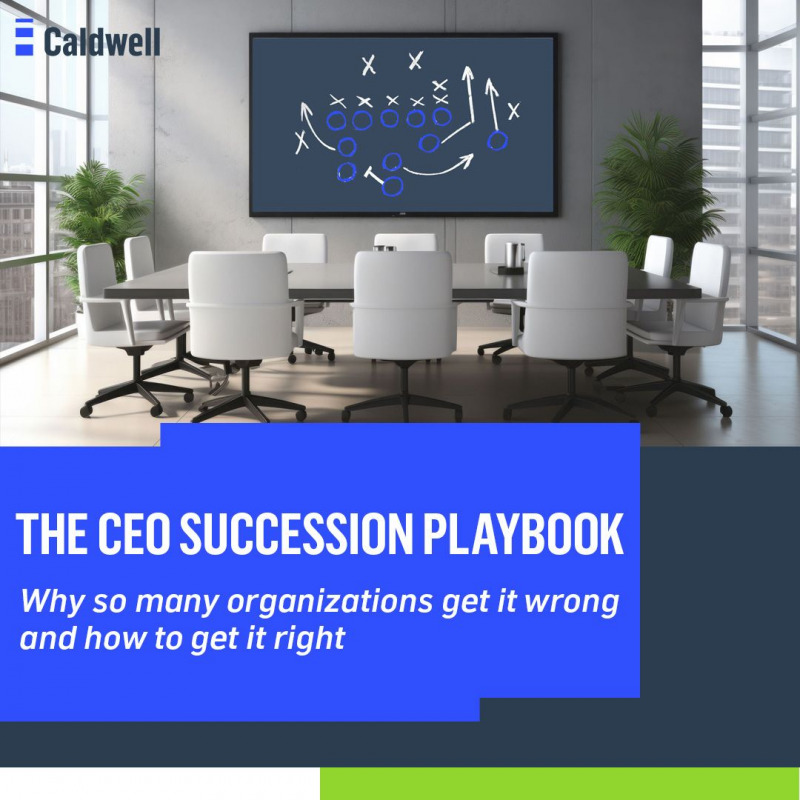The CEO Succession Playbook
CEO succession is a critical process for companies, ensuring that they have the right leadership in place to drive success and growth. Selecting a talented successor to a CEO is perhaps THE most important accountability of a director. The continuity of talented, enlightened leadership by the CEO is highly correlated with value creation and social impact.
And yet, so many companies get CEO succession wrong.
HOW AND WHY SO MANY ORGANIZATIONS GET CEO SUCCESSION WRONG
We believe that the vast majority of people are good, and well intentioned.
We believe that the vast majority of CEOs and directors of companies want to do the right thing for the broader array of stakeholders they serve – i.e., shareholders, customers, employees, community, and the future generations.
So why is it so hard for companies to get CEO succession right?
Inexperience of Directors and CEOs
Most CEOs don’t have the experience of being succeeded, nor do board members gain experience in the nuanced, multi-year, multi-faceted process of CEO succession. The average tenure of a director of an S&P 500 company is 9.7 years and the average tenure of a S&P 500 CEO is 4.9 years. Mathematically speaking, a director of an S&P 500 company will go through the CEO succession process at most twice in a decade. That’s like a golfer who needs to make a hole-in-one on the first tee to win a tournament but doesn’t take any warm-up swings!
Lack of Role Clarity
We see many boards who view CEO succession as a responsibility of the incumbent CEO.
Wrong!
The board of directors has responsibility for the CEO succession process and CEO selection.
The CEO has the responsibility for attracting, retaining, and developing their successor. The key role of the CEO in their own succession is talent development.
We saw one company that repeatedly tasked the incumbent CEO with hiring his own successor. He got so good at hiring his successor that he did it four times over the course of six years.
Each time the CEO succession candidate would gain traction and a following in the company, the incumbent CEO would fire them. Realizing the incumbent CEO did not want to be succeeded and was incapable of hiring and developing his successor, the board of directors took over the responsibility of finding the next CEO, replacing the truculent incumbent. The market capitalization of the company quadrupled by over $10 billion under the new CEO’s leadership over the ensuing decade.
Looking in the Wrong Direction
CEO succession is all about the future of an organization. But even with the most powerful computers and AI modeling, there is not one of us who can say with 100% certainty what the future will hold.
CEO succession can be especially tough for a company whose CEO is iconic or beloved. Organizations will look back wistfully on the departing CEO’s tenure, but CEO succession is about the future, not the past. It’s about the art and science of looking out three to five years, projecting the needs, wants, desires and aspirations of future customers, and then working backwards to what is needed today. Organizations that get CEO succession right do so because they are working today to develop the skills, experiences, and personal attributes needed in tomorrow’s leadership.
Because we live in an ever-changing world – what is needed in the future is not the same as what was needed in the past.
CEO succession is about the future, not the past. Organizations that get CEO succession right do so because they are working today to develop the skills, experiences and personal attributes needed in tomorrow’s leadership.
HOW CAN COMPANIES GET CEO SUCCESSION RIGHT?
Read the complete playbook here: https://www.caldwell.com/executive-search-industry-insights/the-ceo-succession-playbook/
On October 3, 2022, The Counsel Network merged with Caldwell, a leading international executive search firm, greatly expanding our geographic and functional capability. Read more about it here.


